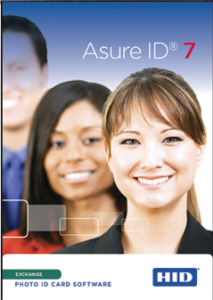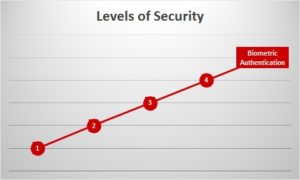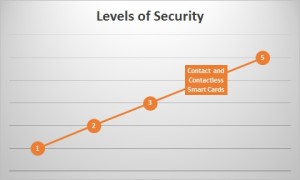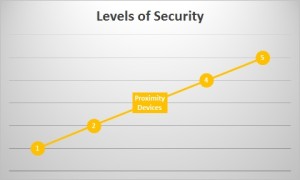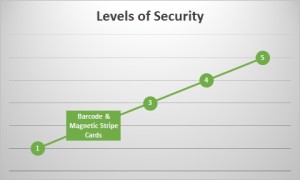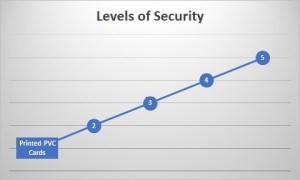 Welcome to the first installment in our series on Levels of Security! In this series we will be investigating how different ID solutions fit different security needs. As we advise organizations on appropriate badge solutions, we find their needs fall into one of five levels of security. We’ve categorized these by the appropriate solutions: printed PVC cards, barcode & magnetic stripe cards, proximity devices, contact and contactless RFID cards, and biometric authentication.
Welcome to the first installment in our series on Levels of Security! In this series we will be investigating how different ID solutions fit different security needs. As we advise organizations on appropriate badge solutions, we find their needs fall into one of five levels of security. We’ve categorized these by the appropriate solutions: printed PVC cards, barcode & magnetic stripe cards, proximity devices, contact and contactless RFID cards, and biometric authentication.
Facilities in need of a minimum security solution may find that a simple ID badge fills their needs. This solution is relatively easy to implement at low cost. This category contains two distinct levels of security: a non-photo card and a photo ID badge.
Non-Photo Printed PVC Cards
The non-photo card offers the lowest level of security, but still provides a quick method to identify a holder’s credentials. These cards can offer an organization’s seal or logo, card-holder’s name and/or title or position, or simply feature color coding. For example, a school or assisted living facility may issue a pink card to volunteers and blue cards to staff. This quickly allows staff, students, parents or residents to identify an authorized individual.
Photo IDs on Printed PVC Cards
 The photo ID badge can include any of the above elements, but then adds an additional security layer: a photo of the cardholder. This provides an additional confirmation that the person carrying a card is the person to whom it was issued. Photo IDs are commonly used for students, teachers, healthcare professionals, and employees at a variety of businesses & government entities.
The photo ID badge can include any of the above elements, but then adds an additional security layer: a photo of the cardholder. This provides an additional confirmation that the person carrying a card is the person to whom it was issued. Photo IDs are commonly used for students, teachers, healthcare professionals, and employees at a variety of businesses & government entities.
Both of these entry-level ID solutions help the wearers and organizations project a professional appearance, giving confidence to clients. They help organizations meet minimal security guidelines required by regulators that are prevalent, for example, in the healthcare field.
The limitation of these simple ID solutions is that a person must confirm the identity of the cardholder, rather than an automated system of access control. For many organizations, however, they provide a cost-effective solution to their most basic needs.
Printed PVC Cards: A Low-Cost Solution
Whether the design includes a photo on an ID or not, printed PVC cards have similar, relatively low costs. For small organizations, or for those who do not want to design, maintain and issue cards themselves, our service bureau is able to offer professional design and printing of cards on demand, and for small relative fees. Customers who print larger quantities of cards or who would like to be able to issue cards in-house and immediately will find that an investment in a printer and supplies is beneficial.
Basic ID cards are an excellent solution for organizations that do not operate in access-controlled facilities. Either option for printed PVC cards provides a means by which clients or patrons can recognize the authority of the wearer, and can provide a sense of visual cohesion in any work, school, or healthcare environment.
 Highlights of this cardPresso software update include:
Highlights of this cardPresso software update include:
